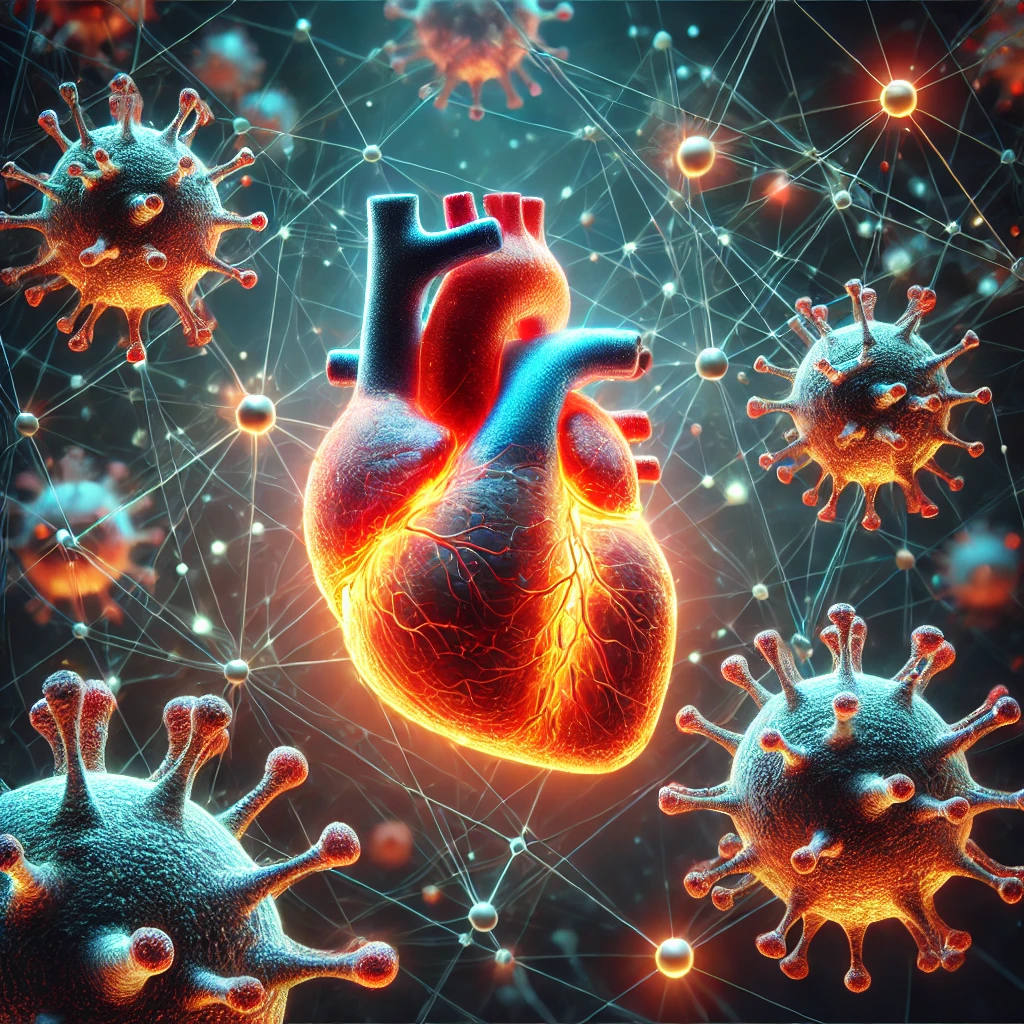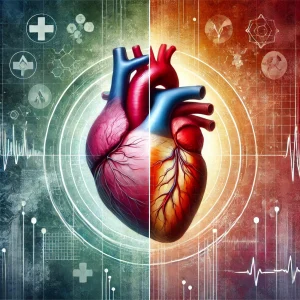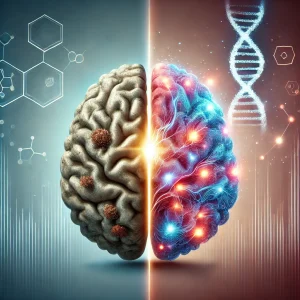The Silent Toll: How Long COVID Affects the Heart

Although 70% of the United States’ population is considered fully vaccinated against COVID-19 and the global pandemic has been declared over for over a year the effects of COVID-19 are still present today. Among the most concerning of these is the impact of long COVID on the heart. Emerging research has illuminated how this condition—characterized by symptoms that persist weeks or months after the acute phase of infection—can significantly affect cardiovascular health.
Understanding the Cardiovascular Risks of Long COVID
COVID-19, caused by the SARS-CoV-2 virus, primarily targets the respiratory system but can have profound effects on other organs, including the heart. The cardiovascular risks associated with long COVID stem from damage to critical structures like the myocardium (heart muscle), pericardium (the protective sac around the heart), and vascular endothelium (the inner lining of blood vessels). The Cleveland Clinic explains, “COVID-19 can directly invade the myocardium, leading to inflammation known as myocarditis, which weakens the heart’s contractions and its ability to pump blood.” This damage can impair cardiac function and lead to symptoms like chest pain, fatigue, and shortness of breath.
Additionally, the virus can damage the vascular endothelium, setting the stage for the formation of blood clots. These clots—whether in large arteries or small capillaries—heighten the risk of acute cardiovascular events such as heart attacks and strokes. According to the American Heart Association, “Individuals recovering from COVID-19 may face an increased risk of these events for years, even if their initial infection was mild.” This finding underscores the virus’s long-lasting impact on heart health, particularly for individuals with underlying conditions like hypertension or diabetes.
The Role of Inflammation and the Immune System
Systemic inflammation plays a central role in the cardiovascular effects of long COVID. During the acute infection phase, the immune system responds aggressively, releasing cytokines to fight the virus. However, this response can sometimes harm healthy tissues. For some patients, elevated cytokine activity persists long after the virus is gone, causing chronic inflammation that affects multiple heart structures.
Harvard Medical School describes how inflammation impacts the vascular endothelium: “Damage to endothelial cells—the thin layer lining blood vessels—impairs their ability to regulate blood flow and maintain vascular integrity.” This endothelial dysfunction can lead to thromboembolism, a condition where blood clots block critical vessels, disrupting oxygen delivery to the heart. Chronic inflammation can also cause fibrosis in the myocardium, stiffening the heart muscle and impairing its ability to pump blood effectively. This cascade of effects may result in conditions like heart failure, arrhythmias, or even sudden cardiac arrest in severe cases.
The Mystery of Microclots
Microclots represent another troubling consequence of long COVID. These tiny blood clots form within the capillaries, obstructing blood flow at the cellular level. The Heart Research Institute (HRI) in Australia highlights the severity of this phenomenon, stating, “Microclots can block blood flow in the smallest vessels, depriving tissues of essential oxygen and nutrients.”
In the myocardium, oxygen deprivation from microclots leads to ischemia, which weakens the heart’s ability to contract and can cause irreversible cardiac cell death. Over time, this ischemic damage can result in myocardial scarring, further reducing the heart’s efficiency and increasing the risk of heart failure. The persistence of microclots in long COVID patients may also explain why some individuals experience lingering symptoms like extreme fatigue, chest discomfort, and exercise intolerance long after their initial recovery.
Long COVID’s Impact on Heart Autonomy
Emerging evidence suggests that long COVID also affects the autonomic nervous system (ANS), which controls involuntary processes like heart rate, blood pressure, and vascular tone. Disruption of the ANS—particularly the vagus nerve—is thought to contribute to symptoms such as postural orthostatic tachycardia syndrome (POTS). Johns Hopkins Medicine explains, “Damage to the vagus nerve, a critical component of the ANS, may explain why some patients experience rapid heart rate and dizziness upon standing.”
POTS is not the only autonomic disorder linked to long COVID. Baroreceptor dysfunction—a condition affecting pressure sensors in the carotid arteries—can lead to unstable blood pressure, fainting episodes, and irregular heart rhythms. Together, these disruptions indicate that the effects of long COVID extend beyond physical damage to cardiac structures and include significant functional impairments in the body’s regulatory systems.
What Can Be Done?
The cardiovascular challenges posed by long COVID necessitate a proactive and multidisciplinary approach to care. Early recognition of symptoms such as chest pain, palpitations, or persistent fatigue is crucial for effective intervention. Diagnostic tools like cardiac MRIs, echocardiograms, and blood tests for biomarkers like troponin can help detect structural or functional abnormalities in the heart.
Preventive strategies also play a key role. Vaccination against COVID-19 has been shown to reduce both the severity of initial infections and the likelihood of developing long COVID. For patients already experiencing cardiovascular effects, treatments targeting inflammation—such as corticosteroids—and anticoagulants to prevent clot formation are under investigation. Lifestyle modifications like adopting a heart-healthy diet, engaging in moderate exercise, and managing stress can further mitigate long-term risks. The Cleveland Clinic advises, “Even small changes in diet and activity levels can have a significant impact on cardiovascular health in long COVID patients.”
Conclusion
Long COVID has revealed the far-reaching consequences of viral infections on the heart. From endothelial damage and microclots to myocardial scarring and autonomic dysfunction, the cardiovascular effects of this condition are profound and multifaceted. As research continues, it is essential to prioritize cardiovascular health in the management of long COVID. Through increased awareness, early interventions, and preventive measures, we can reduce the long-term burden of this condition and support patients in their journey toward recovery.
Works Cited
Chung, Maggie. “Effect of long COVID on the heart • Heart Research Institute.” Heart Research Institute, https://www.hri.org.au/health/your-health/lifestyle/the-effects-of-long-covid-on-the-heart. Accessed 30 December 2024.
“Heart Problems After Covid-19.” Cleveland Clinic, https://my.clevelandclinic.org/health/articles/heart-problems-after-covid. Accessed 30 December 2024.
“Heart Problems after COVID-19.” Johns Hopkins Medicine, 28 April 2022, https://www.hopkinsmedicine.org/health/conditions-and-diseases/coronavirus/heart-problems-after-covid19. Accessed 30 December 2024.Schmidt, Charles. “COVID's Damage Lingers in the Heart | Harvard Medicine Magazine.” Harvard Medicine Magazine,


